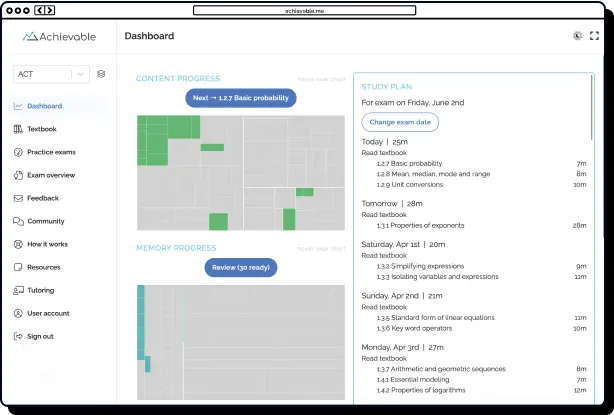
Gap year before medical school: Timing is everything




Table of contents
- Map your gap year timeline for application success
- Master your application timeline: make your gap year work for you
- Avoid timing pitfalls: essential deadlines for gap year applicants
- How to time your application for maximum impact during a gap year
- Know deferral policies and communicate your gap year plans clearly
This article is part 2 of 8 our series on making the most of your medical school gap year, where we provide you with insights on studying for the MCAT, using your time effectively, and translating your experiences into compelling narratives. In part 2, we provide you with expert advice on creating a plan for your gap year and keeping track of requirements so you never miss a deadline.

Map your gap year timeline for application success
Master your application timeline: make your gap year work for you
As a pre-med student considering or taking a gap year, your ability to plan ahead is key to maximizing your competitiveness for medical school. Think of your gap year as a chance to take control of your application timeline: set clear goals, mark your deadlines, and make each step intentional.
Adjust your application cycle thoughtfully. A gap year means shifting everything, MCAT prep, applications, recommendation requests, a year later than the traditional timeline. Begin by mapping out the entire process: research MCAT test dates, AMCAS deadlines, and when to approach professors for letters. Your first move should be choosing the best MCAT date for you.
Plan your MCAT timing strategically. Most successful gap year applicants sit for the MCAT in the spring (March-May) or early summer (June) of their gap year. Both Kaplan's Petros Minasi and AMA's MCAT guidance suggest testing at least one year ahead of your intended med school start. Target April so your score arrives before the AMCAS application opens in May. Submitting your application as early as possible, ideally the first week of June, can significantly enhance your chances, as Shemmassian Academic Consulting notes. Remember, most schools use rolling admissions, so timing matters.
Be proactive with letters and transcripts. Once you graduate, it can be harder to track down professors or mentors. The AAMC recommends requesting letters of recommendation by December or January of your gap year and ordering transcripts at least a month before your school's posted deadline to avoid delays.
Treat your gap year as you would your junior year. Complete your personal statement, activities section, and school list by early May. For the 2025-26 AMCAS cycle, prepare for the May 1st launch and aim to submit by May 27th, following MedSchoolCoach's calendar. Although your schedule may feel more flexible, stick to these benchmarks to avoid missed opportunities. Use the extra time to polish your application and address any weaknesses.
Avoid timing pitfalls: essential deadlines for gap year applicants
Gap year applicants sometimes underestimate how strict the med school timeline really is. Admissions committees expect you to meet all deadlines, with no exceptions for those who took extra time.
Key dates to keep in mind:
- AMCAS primary application: Opens May 1st (submissions start May 27th for the 2025-2026 cycle). Verified applications are sent to schools starting around June 27th. Aim to submit during the first week of June for the best results. See full 2025-2026 timeline.
"Applying in July yields much higher acceptance rates than waiting until October." (More on optimal application timing)
- Secondary applications: Typically arrive 2-4 weeks after primaries. Respond within 14 days, but try for 10 business days. Secondary application guidance
- MCAT score cutoff: Take the MCAT by May 23rd at the latest to ensure your score is processed in time. MCAT test date timeline
- Transcript verification: Order transcripts as soon as spring grades are posted to prevent any hold-ups.
Some schools, like Mercer University School of Medicine, note that applications submitted after August 1st are at a disadvantage.
Quick tip: Use a typical junior year framework for your gap year:
- MCAT by late April
- AMCAS primary by June 1st
- Secondaries returned within 10 business days
Don't let the extra year lull you into complacency. Meeting (or beating) deadlines shows you're responsible and ready for the rigor of medical school. See the 2025/26 AMCAS timeline.

How to time your application for maximum impact during a gap year
As a pre-med applicant, when you apply is almost as important as how you apply. Using your gap year wisely can help you stand out in a competitive field.
Take advantage of rolling admissions. Medical schools start reviewing applications as soon as AMCAS opens. Submitting in late May or early June gives you a real edge.
Focus on impactful ways to strengthen your application: raise your GPA through additional coursework (especially if below 3.5), retake the MCAT to aim for a 510+, log over 150 clinical hours, or complete a robust research project.
"Many students who take a gap year transform not just their credentials, but their perspective - leading to richer interview stories and stronger, more authentic applications." (Shemmassian Consulting on gap years)
If you need to retake the MCAT, plan carefully so your new score arrives by May, preserving your advantage in the rolling admissions process, as SOS Admissions advises.
Choose depth over breadth. The AAMC recommends that a sustained, meaningful experience (such as a full-time research or service role) is more impressive than several short stints.
Apply only when your experiences are complete and meaningful. If your gap year activities are still in progress or will add significant value, consider waiting until those experiences are finished to apply. If you're already a strong candidate, apply as soon as you're ready.
Know deferral policies and communicate your gap year plans clearly
Deferrals aren't automatic - each medical school has its own policy. If there's any chance you'll need to defer, research every school's policy before applying.
- Sidney Kimmel Medical College: One-year deferrals possible with an approved plan (Collegiate Gateway's deferral guide).
- UMass Chan Medical School: Deferrals for emergencies or major life events only.
- Harvard Medical School: Allows deferrals for pre-approved projects or service with a detailed proposal (Accepted's advice).
- Tulane's Time Out Program: For structured, goal-oriented pursuits like a PhD or full-time service (Time Out Program info).
Be specific and organized when communicating with schools and recommenders. When requesting a deferral, provide a clear plan with roles, dates, and locations. Example: "NIH Intramural Research Fellowship (June-December 2025); Emergency Department Scribing at Mercy Hospital (January-May 2026)" (Deferral tips from Accepted). Avoid vague statements.
Keep your recommenders updated so their letters can highlight your gap year growth, as MedSchoolCoach suggests. Remember, federal loans usually defer automatically when you start medical school, but private loans may require extra steps (AAMC guidance).
Checklist for a smooth gap year deferral:
- Research each school's deferral policy before applying.
- Submit a detailed, month-by-month plan.
- Coordinate with recommenders for updated letters.
- Confirm loan deferment details with all lenders.
- File deferral requests within 2-4 weeks of acceptance, as required.
A clear, detailed plan shows foresight and responsibility: qualities admissions committees are looking for.
Click here for part 3, "Build a customized MCAT study schedule for your gap year." Read on for expert study tips and advice on creating a high-impact MCAT preparation plan.

